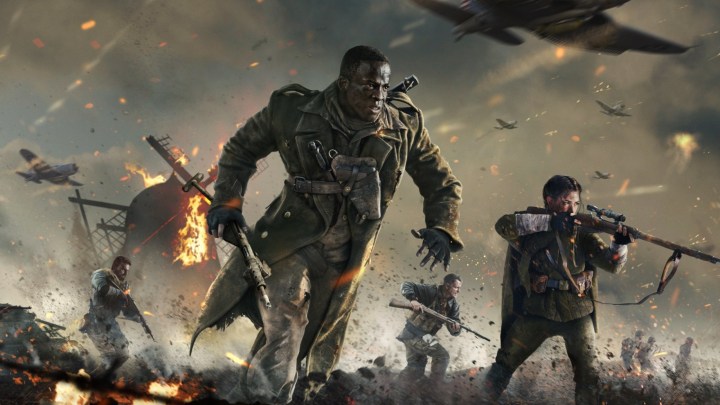Call of Duty: Vanguard changes up the franchise’s usual formula in a lot of ways. When I reviewed the game, I couldn’t help but notice how its story, set in World War II, wasn’t being told through bombastic action sequences. Instead, cutscenes dominate the game, along with its characters. In so many Call of Duty titles, you’re a nameless soldier taking part in one conflict or another. The conflict is what usually takes precedent, not the person fighting in it.
But for Vanguard, it’s the opposite. It uses World War II as a backdrop, shining the spotlight on its cast of characters while still trying to tell a Marvel-ized World War II story. The resulting game is one of Call of Duty’s worst uses of World War II, one that doesn’t hold a candle to its best story using it: World at War.
Setting makes the story
Vanguard and World at War are opposed in nearly every way. World at War is based on real events — but naturally adds its own Call of Duty spin — while Vanguard is largely a work of fiction. Funny enough, the two do share one point in common: A Russian sniper. Vanguard‘s Polina picks up her father’s old rifle after he’s killed by Nazis in the bombing of Stalingrad. Although the idea seems to have come from World at War‘s mission, Vendetta, which has players snipe enemies through the streets of a similarly bombed-out Stalingrad with the help of Sergent Reznov.

In both missions, the strengths and weaknesses of each game’s story are put on full display. World at War‘s mission emphasizes the destruction and death caused by the Nazis, with Reznov even taking the player through an old bar and commenting on how it used to be filled with laughter. It makes the city feel like something that was alive at some point. Polina’s story in Vanguard, however, doesn’t care for its setting. Instead, Polina and her family are the stars of the show, and the story that ends up being told is less gripping. Naturally, the stakes are high for Polina, but while I was playing as her, they weren’t. I simply couldn’t connect.
Those strengths in World at War persist through its entire campaign. The game is able to sink players into the environments they’re battling in by making them the vehicles for storytelling. Going through World at War‘s campaign again, it’s a steady progression. The Russian campaign starts in Stalingrad and ends with players planting the Soviet flag atop the ruins of the Reichstag. The U.S campaign similarly takes players through the Pacific theater, all the way from Peleliu to Okinawa.

Vanguard doesn’t have that same sense of presence. Its settings, although gorgeous thanks to modern graphics tech aren’t as gripping as what players will shoot their way through in World at War. Again, for Vanguard, World War II is nothing more than a backdrop, something for its characters to barrel through as they establish themselves as wartime legends.
That discounts World at War‘s greatest strength — that its story is, first and foremost, about its settings, and therefore, about World War II. The game is horrific, gruesome, and violent because World War II was. Vanguard on the other hand has its characters quip off snarky lines at any opportunity as they traipse through history, carving out a story that is entirely self-centered and has no time for outward reflection.
Even as far as Call of Duty stories go, which regularly discount or twist history to fit an America-centric point of view, Vanguard‘s use of World War II is poor. Against a game like World at War that places its emphasis on the war’s conflicts themselves while delivering players the action they expect, Vanguard‘s weak cast and scant use of the War itself mean it really could have been set at any time.
Call of Duty: Vanguard is available now on Xbox One, Xbox Series X/S, PS4, PS5, and PC.
Editors' Recommendations
- Call of Duty: Warzone Mobile is out to eliminate mobile gaming’s stigma
- You can get Call of Duty and Alan Wake with PS Plus in July
- Call of Duty: Warzone 2.0’s new update just nerfed the game’s best weapons
- The best indie hidden gems of 2022: 10 excellent games you can’t miss
- 8 Call of Duty: Modern Warfare II weapons you should level up before Warzone 2.0




